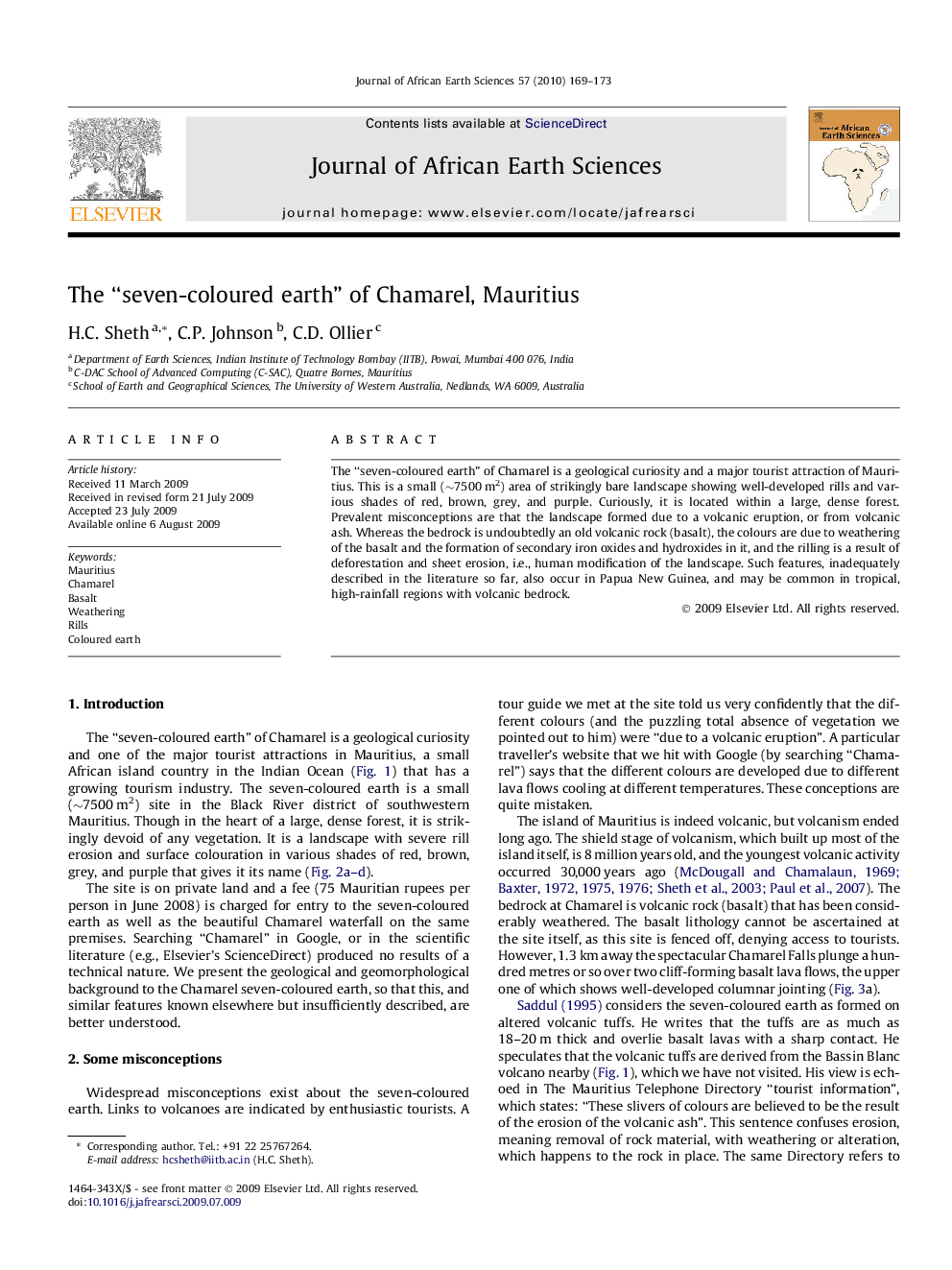| Article ID | Journal | Published Year | Pages | File Type |
|---|---|---|---|---|
| 4729536 | Journal of African Earth Sciences | 2010 | 5 Pages |
The “seven-coloured earth” of Chamarel is a geological curiosity and a major tourist attraction of Mauritius. This is a small (∼7500 m2) area of strikingly bare landscape showing well-developed rills and various shades of red, brown, grey, and purple. Curiously, it is located within a large, dense forest. Prevalent misconceptions are that the landscape formed due to a volcanic eruption, or from volcanic ash. Whereas the bedrock is undoubtedly an old volcanic rock (basalt), the colours are due to weathering of the basalt and the formation of secondary iron oxides and hydroxides in it, and the rilling is a result of deforestation and sheet erosion, i.e., human modification of the landscape. Such features, inadequately described in the literature so far, also occur in Papua New Guinea, and may be common in tropical, high-rainfall regions with volcanic bedrock.
